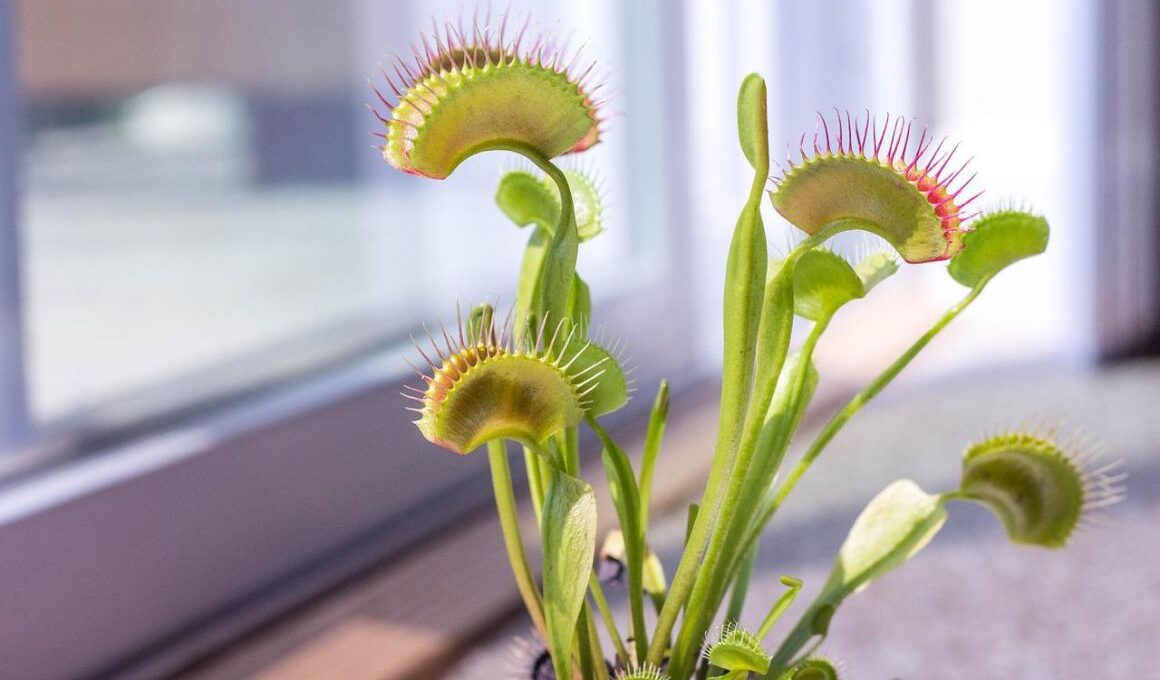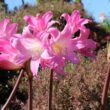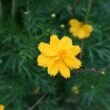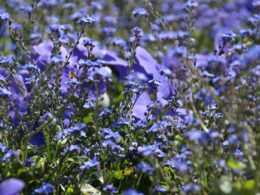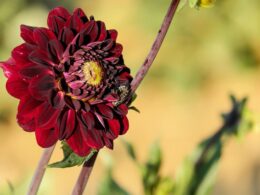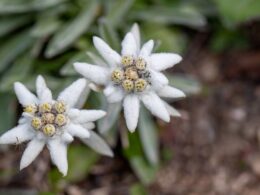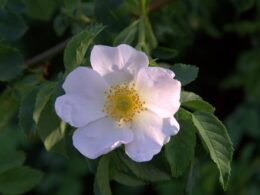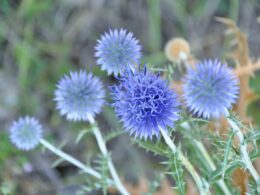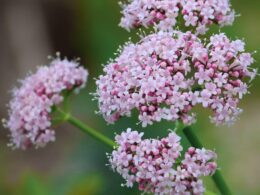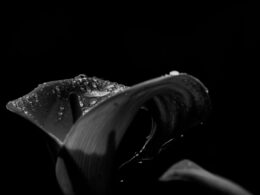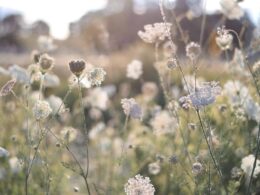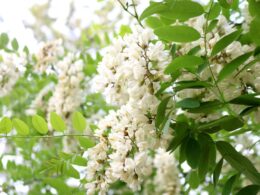Venus Flytrap Description
The Venus fly trap flower (Dionaea muscipula) is a carnivorous plant native to the wetlands of North and South Carolina. The most distinctive feature of the plant is its large trap, which is composed of two hinged lobes that snap shut when triggered by an animal or insect.
Venus Flytrap Characteristics
Its scientific name, Dionaea muscipula, means “mousetrap plant”. The plant gets its common name from its ability to trap and digest insects. The Venus fly trap flower is a small plant that typically grows to about 6-8 inches in height. It has a rosette of green leaves with 1-2 inch long, tooth-like bristles along the margins. The center of each leaf is hinged and lined with red or purple hairs. When an insect brushes against these hairs, the leaf will snap shut, trapping the prey inside.
Venus Flytraps Habitat
Venus fly trap flowers grow in the subtropical wetlands of North and South Carolina. The soil in these wetlands is nutrient-rich and acidic, and the climate is warm and humid. These conditions are necessary for Venus fly trap flowers to thrive. In the wild, Venus fly trap flowers grow in small groups or clusters. They often grow alongside other carnivorous plants, such as pitcher plants and sundews. While Venus fly trap flowers can be grown in captivity, they will not survive if they do not receive the proper care.
Venus Flytrap Flower: a Carnivorous Plant
Unlike most plants, which use sunlight to convert energy into food, the Venus fly trap flower gets its nutrients from insects. Inside the trap are tiny hairs that act as sensors, detecting movement and triggering the trap to close. Once the prey is trapped, the Venus flytrap secretes digestive juices that break down the food so that it can be absorbed. The Venus flytrap is an essential part of the wetland ecosystem, preying on insects and other small animals that might otherwise damage native plants.
Growing Season
The Venus fly trap flower has a relatively short growing season, lasting from April to October. During this time, the plant produces new leaves and flowers. After the growing season ends, the plant enters a dormant period in which it rests and prepares for the next year. For gardeners who want to grow their own Venus flytraps, it is important to replicate these seasonal changes. By mimicking the plant’s natural habitat and providing the right conditions, it is possible to successfully grow Venus fly trap flowers indoors.
What Does Venus Fly Trap Flower Consume?
The Venus fly trap flower is a carnivorous plant that lives in nutrient-poor environments. To compensate for the lack of nutrients, the plant has evolved to trap and digest insects. The plant typically only needs to eat one or two insects per week. Insects are the main ingredient in their diet, however they can consume other preys such as:
- insects such as ants, aphids, and fruit flies ;
- larger insects such as beetles, grasshoppers, and moths;
- Venus fly trap flowers have also been known to trap small reptiles and rodents.
Attracting the Prey
The Venus flytrap uses this method to attract prey, as the movement of the trap and the production of digestive juices both attract insects. In addition, the plant’s glands produce a sweet-smelling nectar that entices Insects to land on the trap. Once an insect is digested, the plant absorbs nutrients from the prey’s body, which helps to fertilize the soil and provide food for the plant.
How to Take Care of a Venus Flytrap?
To take care of a Venus Flytrap, you need to:
- Keep the soil damp at all times: the flytrap likes to live in wet conditions, and the soil should never be allowed to dry out.
- Give the plant plenty of sun: Venus Flytraps need at least four hours of sunlight per day, but can tolerate up to twelve hours.
- Feed the plant live insects: Venus Flytraps will capture and eat small insects on their own, but you can also supplement their diet with live insects.
- Trim dead leaves and flower stalks: dead leaves and flower stalks should be removed from the plant to keep it healthy.
How to Take Care of a Venus Fly Trap Flower During Inactivity?
During dormancy, the plant will enter a state of rest, making it appear dead. However, this is perfectly normal and necessary for the plant’s health. To care for your Venus fly trap flower during dormancy, water it generously and then place it in a cool, dark location. A fridge or basement is ideal. Check on the plant every few weeks to make sure that the soil is moist and that there is no sign of rot. If everything looks healthy, simply leave the plant to rest until spring arrives. With a little care, your Venus flytrap will come out of dormancy looking refreshed and ready to thrive.
Venus Fly Trap Flower Propagation
The propagation of the Venus fly trap flower can be done in three ways.
By Division
To propagate by division, the flytrap is carefully dug up from its pot and the root ball is divided into two or more sections with a clean, sharp knife. Each section must have at least one healthy leaf bud. The divisions are then replanted in moist soil and kept warm and humid until new growth appears.
By Seed
To propagate by seed, the flytrap’s seeds are sown on top of moist soil and kept warm and humid until germination. Once the seedlings have two or three leaves, they can be transplanted into individual pots.
By Leaf Cutting
To propagate by leaf cuttings, a healthy leaf is cut from the flytrap with a clean, sharp knife. The leaf is then placed on moist soil and covered with a clear plastic bag to maintain humidity. Once new growth appears, the plant can be transplanted into an individual pot.





